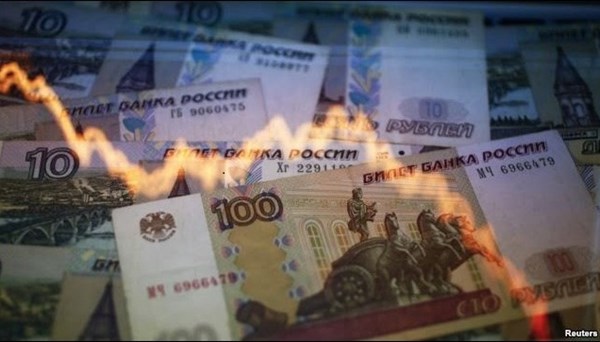Deploying troops to Ukrainian borders has cost Russia almost $10 billion
The biggest fall of the Russian stock market since the spring of 2020 began to affect the Russian National Welfare Fund (NWF), which has more than a third of its holdings in ruble-denominated assets.
At the end of December, the size of the NWF, where since 2017 Russia has been storing oil revenues, decreased by 320.9 billion rubles ($4.17 billion), reported the Russian Finance Ministry.
Real expenditures from the fund, including infrastructure projects, amounted to only 0.3 billion rubles ($3.9 million). This money was spent tp purchase the cars for the Moscow subway and the construction of an airport in Saratov.
The drop in NWF holdings was caused by the plummeting Sberbank shares, which the NWF purchased from the Russian Central Bank in 2020.
As a result of falling markets shares amid reports of the deployment of the Russian army to the border with Ukraine, the value of the controlling stake in the country's largest bank shrank from 3.568 ($47 billion) to 3.312 trillion rubles ($43 billion). The Russian Ministry of Finance lost another 1 billion rubles ($13 million) on Aeroflot shares, which were bought as part of the measures to save the national airline from the pandemic crisis.
In December alone, the NWF suffered a loss of 257 billion rubles ($3.35 billion) due to the fall of the Russian stock market, and in January these losses increased along with the collapse of stock indices.
After the failure of negotiations with NATO and the United States and the strengthening of the Kremlin's bellicose rhetoric since the beginning of January, SberBank fell in price on the Moscow Stock Exchange by another 14.8%.
Thus, the value of the NWF holdings fell to 2.824 trillion rubles ($37 billion), with the NWF suffering another 487 billion rubles of losses ($6.35 billion). Shares of Aeroflot fell by 4.3%, which reduced the value of investments of the Russian Finance Ministry from 49.1 ($640 million) to 47.1 billion rubles ($610 billion).
In December and 18 days of January, the NWF lost 746 billion rubles ($9.73 billion) on investments in rapidly depreciating state-owned companies.
As a result, the fund, which was originally conceived as a mechanism for stabilizing the Russian pension system, and then became a rainy-day reserve, turned into a "sieve" into which the Russian government pours hundreds of billions of rubles, but cannot fill it up.
The fund's losses from the market collapse almost exceeded the amount that the government provided to replenish it for the same period - 505 billion rubles ($6.57 billion) in December and 109.8 billion rubles ($1.43 billion) for the period from January 14.
At the beginning of the year, the total size of the NWF, according to the report of the Russian Finance Ministry, was 13.565 trillion rubles ($180 billion). The fund’s liquid foreign currency assets held in the Central Bank were equal to 8.433 trillion rubles, or $113.25 billion.
